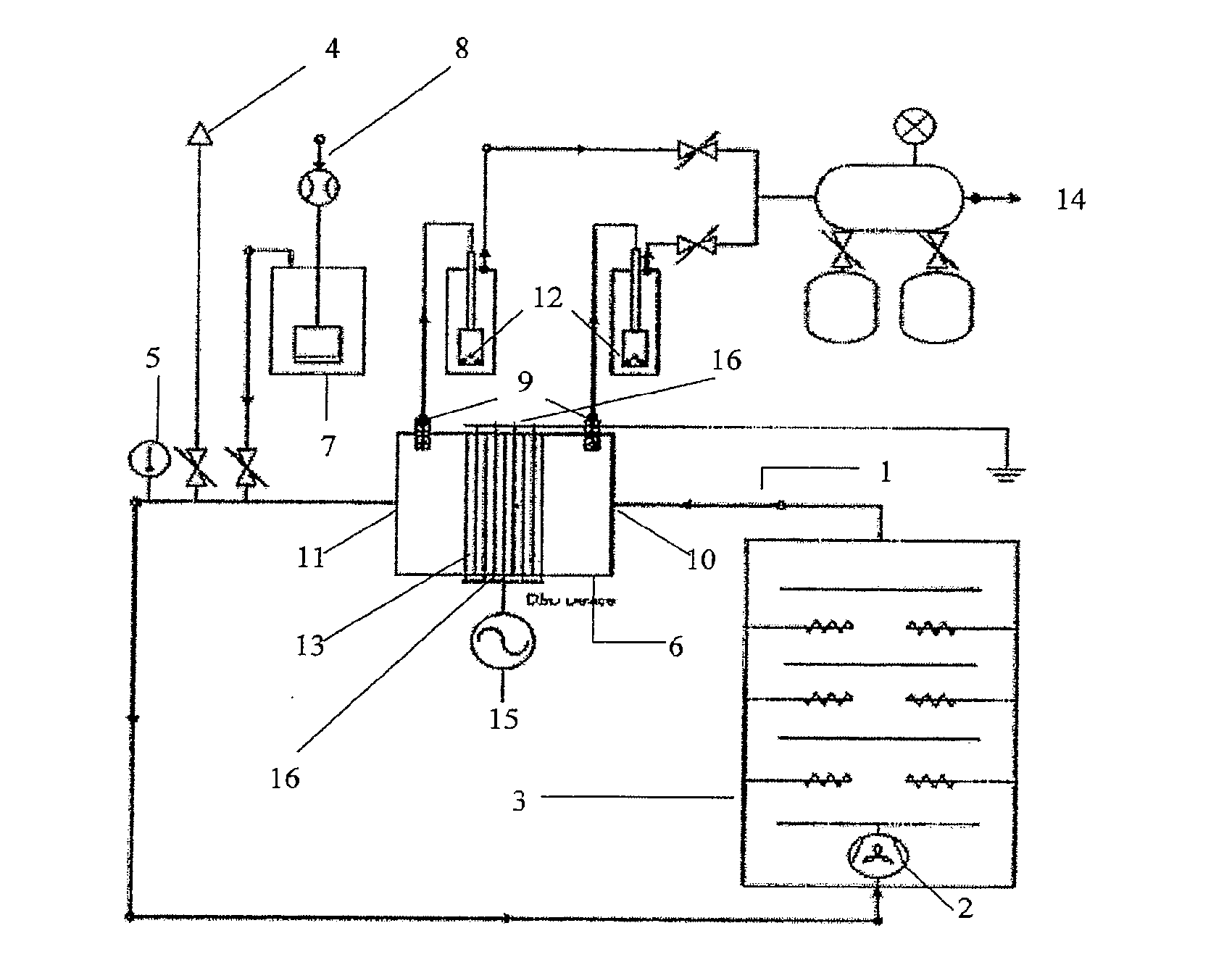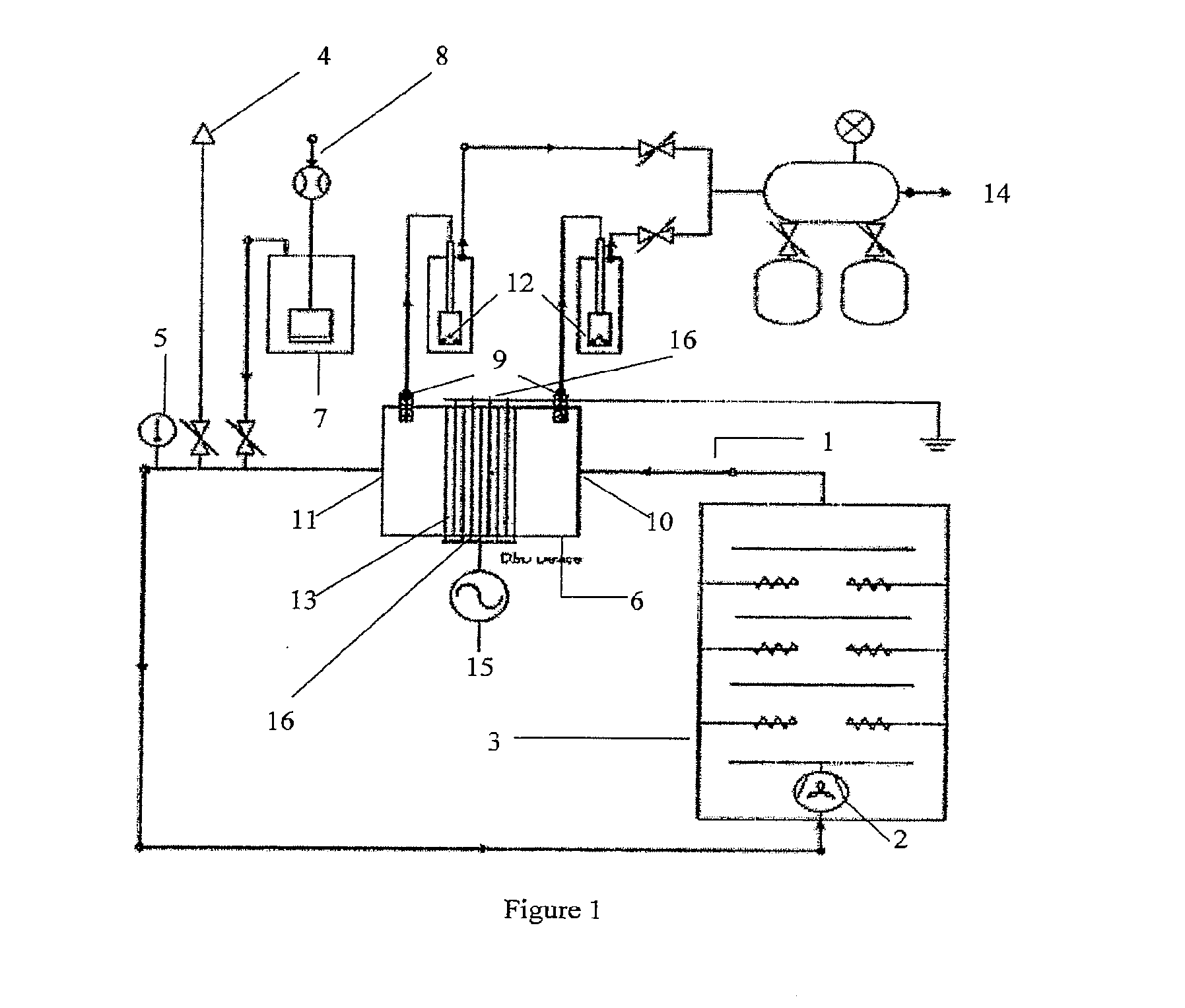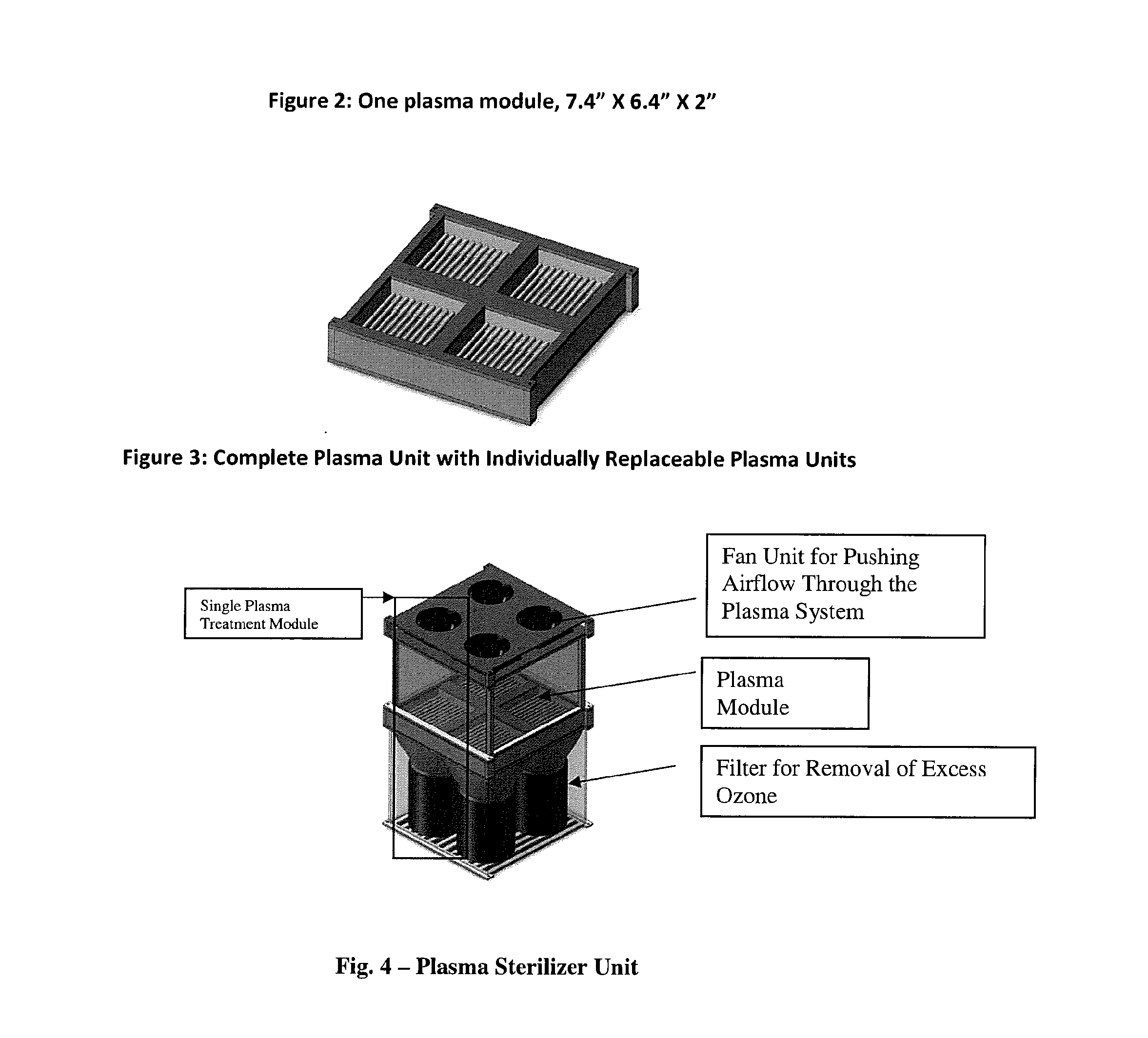Plasma system for air sterilization
a technology of air sterilization and plasma, which is applied in the direction of disinfection, chemical/physical/physical-chemical processes, energy-based chemical/physical/physical-chemical processes, etc., can solve the problems of ineffective decontamination of airborne microorganisms in flight using non-thermal plasma technology, ineffective decontamination of plasma-based air only found effective, and ineffective hepa filters for trapping airborne microorganisms of submicron siz
- Summary
- Abstract
- Description
- Claims
- Application Information
AI Technical Summary
Benefits of technology
Problems solved by technology
Method used
Image
Examples
example 1
[0055]A PDRF system for a bioaerosol treatment facility is designed to provide a recirculating gaseous media environment. The PDRF system has a total volume of 250 liters and is designed to operate at high airflow rates of at least 25 L / s, which is typical of indoor ventilation systems. The system has an inlet with an attached Collison nebulizer for bioaerosol generation and two air-sampling ports connected to a vacuum air sampling system. The system also has a large mixing chamber that contains a series of aluminum baffle plates and a variable speed centrifugal blower motor that drives the air through the DBD treatment chamber. The residence time, defined as the time for one bioaerosol particle to make one complete revolution through the system, is approximately 10 seconds.
[0056]The DBD device may include a thin plane of wires with equally spaced air gaps of 1.5 mm, and each second wire is a high voltage electrode. The high voltage electrodes are about 1 mm diameter copper wires sh...
example 2
[0058]The spores used for testing the system were Bacillus globigii (BG) spores, donated by the U.S. Department of Defense (Dugway Proving Ground, Utah). Stock concentration powder was approximately 1×1011 cfu / gm.
[0059]The plasma sterilizer was placed inside the room between the injection point and the air sampler. The plasma sterilizer was turned ON remotely from inside the control room. The spores were then injected into the air. Samples were taken each minute for 30 minutes. The results were analyzed using plate count method.
example 3
[0060]The average power of a suitable discharge was about 330 W and considering the discharge area of 91 cm−2, the power density was 3.6 W / cm−2. The majority of power was discharged in the very short duration of the pulse itself, which had a period of 77 μs and average pulse power of 2618 W. Since the residence time of a bioaerosol particle passing through the discharge area was 0.73 ms, and the period between pulses was 0.6 ms, each bioaerosol particle that passed through the DBD discharge experienced about 1 pulse of DBD discharge power.
PUM
 Login to View More
Login to View More Abstract
Description
Claims
Application Information
 Login to View More
Login to View More - R&D
- Intellectual Property
- Life Sciences
- Materials
- Tech Scout
- Unparalleled Data Quality
- Higher Quality Content
- 60% Fewer Hallucinations
Browse by: Latest US Patents, China's latest patents, Technical Efficacy Thesaurus, Application Domain, Technology Topic, Popular Technical Reports.
© 2025 PatSnap. All rights reserved.Legal|Privacy policy|Modern Slavery Act Transparency Statement|Sitemap|About US| Contact US: help@patsnap.com



